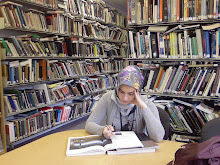
Penrith castle in 1772 from Gilpin's book on Cumberland and Westmoreland.
In 1768 Gilpin published his popular Essay on Prints where he defined the picturesque as '"that kind of beauty which is agreeable in a picture" and began to expound his "principles of picturesque beauty", based largely on his knowledge of landscape painting. During the late 1760s and 1770s Gilpin travelled extensively in the summer holidays and applied these principles to the landscapes he saw, committing his thoughts and spontaneous sketches to notebooks.
Gilpin's tour journals circulated in manuscript to friends, such as the poet William Mason, and a wider circle including Thomas Grey, Horace Walpole and King George III. In 1782, at the instigation of Mason, Gilpin published Observations on the River Wye and several parts of South Wales, etc. relative chiefly to Picturesque Beauty; made in the summer of the year 1770 (London 1782). This was illustrated with plates based on Gilpin's sketches, etched by his nephew William Sawrey Gilpin using the new aquatint process. There followed Observations on the Lake District and the West of England and, after his move to Boldre Remarks on Forest Scenery, and other woodland Views ... (London 1791).
For Gilpin, both texture and composition were important in a "correctly picturesque" scene. The texture should be "rough", "intricate", "varied", or "broken", without obvious straight lines. The composition should work as a unified whole, incorporating several elements: a dark "foreground" with a "front screen" or "side screens", a brighter middle "distance", and at least one further, less distinctly depicted, "distance". A ruined abbey or castle would add "consequence". A low viewpoint, which tended to emphasise the "sublime", was always preferable to a prospect from on high. While Gilpin allowed that nature was good at producing textures and colours, it was rarely capable of creating the perfect composition. Some extra help from the artist, perhaps in the form of a carefully placed tree, was usually required.
In contrast to other contemporary travel writers, such as Thomas Pennant, Gilpin included little history, and few facts or anecdotes. Even Gilpin's descriptions can seem quite vague, concentrating on how scenery conformed to picturesque principles rather than its specific character. In one much-quoted passage, Gilpin takes things to an extreme, suggesting that "a mallet judiciously used" might render the insufficiently ruinous gable of Tintern Abbey more picturesque. In the same work he criticises the poet John Dyer for describing a distant object in too much detail. Such passages were easy pickings for satirists such as Jane Austen demonstrated in Northanger Abbey as well as many of her other novels and works. (Elizabeth Bennet, in Pride and Prejudice, notably refuses to join Mr. Darcy and the Bingley sisters in a stroll with the teasing observation, "You are charmingly group'd, and...The picturesque would be spoilt by admitting a fourth.")
Although he came in for criticism, Gilpin had published at the exactly the right time. Improved road communications and travel restrictions on continental Europe saw an explosion of British domestic tourism in the 1780s and 1790s. Many of these picturesque tourists were intent on sketching, or at least discussing what they saw in terms of landscape painting. Gilpin's works were the ideal companions for this new generation of travellers; they were written specifically for that market and never intended as comprehensive travel guides.

No comments:
Post a Comment